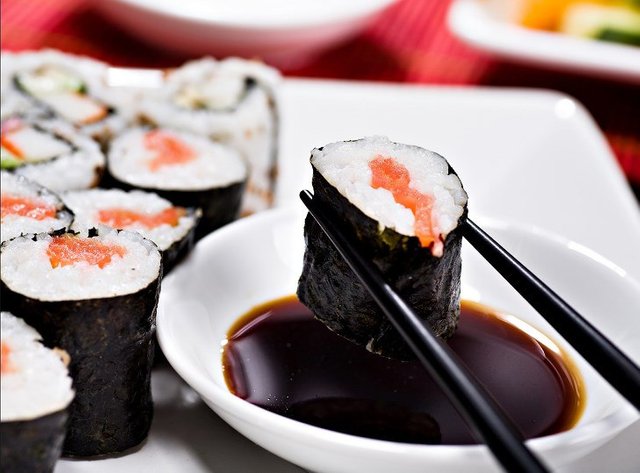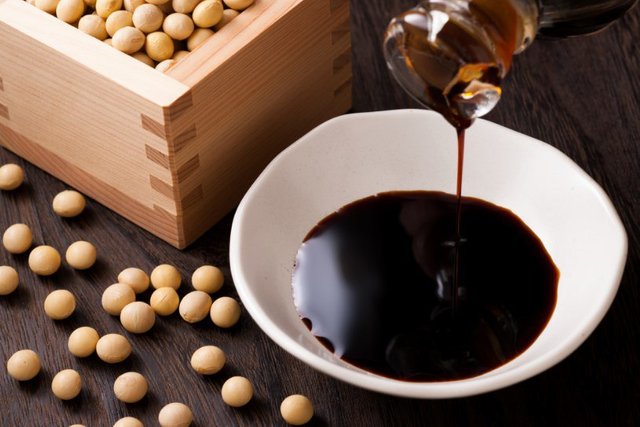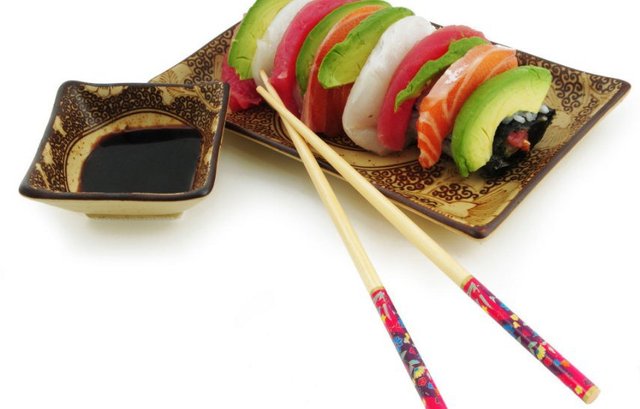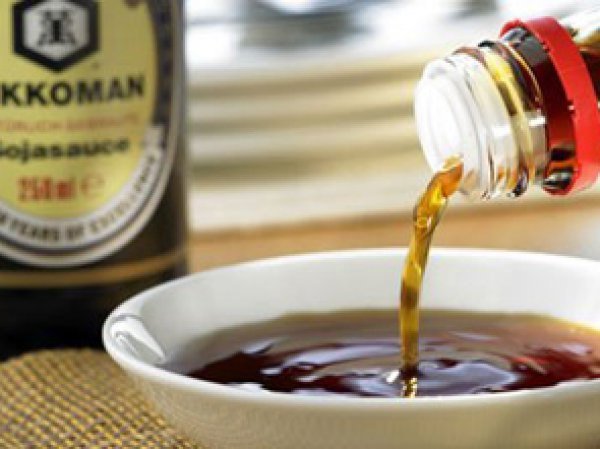Is soy sauce good or bad? History of appearance, composition, a choice of quality one

The history of soy sauce originates in ancient China, where thousands of monks, because of religious motives, had to replace dairy products and meat with soy. As a result, they learned how to cook vegan cheese, which replaced cow's milk with soy (tofu) and, of course, soy sauce. Precisely to say, when exactly he appeared no one can. But it is known that after a while the technology of manufacturing has appeared and at Japanese.
In the form in which it is known to us today, it appeared during the reign of the shogun dynasty Iyasu Tokugawa (17-19 centuries), at a time when the development of Japanese cooking was taking place.
A detailed recipe for the preparation of this product was first described in the book "Yoshufusi", which was published in 1965. By this time it was produced all over Japan. But the most famous craftsmen in its manufacture lived in Izumi, which in our time is called Osaka. In those places it was called Sakaidze and sold in the most famous stores in Kyoto (then the capital of Japan).
In Europe, it began to be exported from 1668, when Dutch seafarers were allowed to trade in Nagasaki. It was the Dutch who first came up with a method of transportation that did not lose the quality of the sauce.

In Russia soy sauce appeared in the 90's. And it should be noted that those who fell in love with it in those days and to this day remain its fans.
Useful properties of soy sauce:
1) Contains a large number of amino acids, minerals and vitamins.
2) It can serve as a good preventative against the development of cancerous tumors, due to its ability to reduce the amount of free radicals.
3) By the amount of protein content in no way inferior to meat. And the large content of gluotomins in it will allow you to avoid using salt without much effort.
It has the ability to slow the aging of the body and improves blood circulation.
Who is recommended to use soy sauce:
It is recommended to consume people who have a food allergy to proteins of animal origin.
It is also useful for people suffering from cardiovascular disease: ischemic disease, hypertension, atherosclerosis, recovery from myocardial infarction.
People suffering from obesity.
Diabetics, since soy is considered a dietotherapeutic tool.
People suffering from chronic constipation of alimentary character, suffering from chronic cholecystitis.
Those who suffer from abnormalities of the musculoskeletal system (such as arthritis and arthrosis).
Harm and contraindications to soy sauce
1) Has an adverse effect on the human endocrine system. Children who consume soy, are often exposed to the disease of the thyroid gland.
2) May cause an allergic reaction.
3) Contains isoflavones, the composition of which is similar to the sex hormones of women (estrogens). On the female body, they can act positively, but on the development of the brain of the embryo is negative. They also increase the risk of not wearing. So it is recommended that pregnant women limit the consumption of soy-containing foods.
The technology of soy sauce production is very simple. At first, soya is evaporated, then salt and roasted wheat are added to it, after which they are distributed in packages and left to hang under the sun. In the packages, fermentation (fermentation process) begins to occur and as a result, a soy sauce is formed. The process of natural fermentation is quite long and takes at least a year. The resulting liquid is collected in containers, filtered, and then bottled.

Modern production of this product occurs in a slightly modified version. After all, the number of people wanting to buy soy increases every day. Therefore, the manufacturer, in order to keep up with the growth of consumer demand gets tricky. In order to accelerate the process of fermentation tenfold, the producers of the genus Aspergillius began to add to the mixture of wheat and soybean. Due to this, its preparation decreases from one year to one month. Bacteria split soya into starch and protein. As a result, sugar is formed, which gives the sauce a slightly sweet taste.
Never buy it in the markets on tap. Acquire only soy sauce in a glass bottle of checked brands, in those stores or sales locations where you have repeatedly purchased it.
You should also remember that it should be sold only in glass bottles, since it is only able to be stored in glass containers. If you meet a soy sauce in a plastic bottle, you should know that it is a fake. The bottle in which it is stored must be transparent, you must see its contents. The sauce should have a dark brown or gentle light color, and it must be necessarily transparent.
Avoid the product in which you will meet incomprehensible chemicals such as E200, E220, etc. Natural soy sauce, which is made by traditional technologies, does not need preservatives and can be stored for a few years.
Always carefully read the composition. Natural soy sauce should contain only wheat, soy and salt. If the composition contains vinegar, shakes, sugar, anise, peanuts or something like that, then do not buy such a product, because it is unnatural.

Pay attention to the protein content. The protein in this product should be at least 7%.
A complete and useful article on soy sauce. Thank you dear @enigma84 and spends a nice Friday
Thank you for kind words dear friend)
Exclusive 30 days free upvotes to your every new post. No need to send any kinds of steem or sbd its full free service. we have paid service too so please check them too. Active the free upvote service and learn more about it here : http://www.steemitfollowup.cf
So much soy details :)
Beware of the post with 30 days free upvotes, it's a scam don't give away your user and password, read here:
https://steemit.com/steemit/@arcange/phishing-site-reported-www-steemitfollowup-dot-cf
I’ve seen some replacements for those allergic to soy, like Bragg’s Liquid Aminos... very healthy and tasty too!